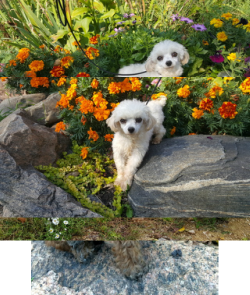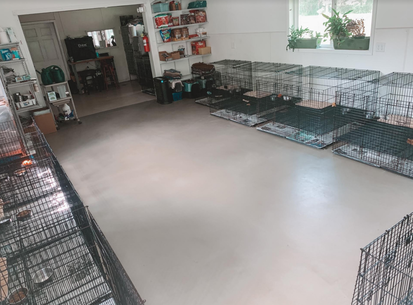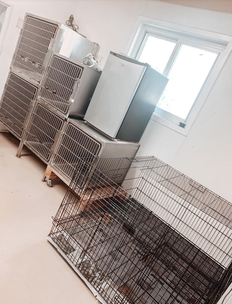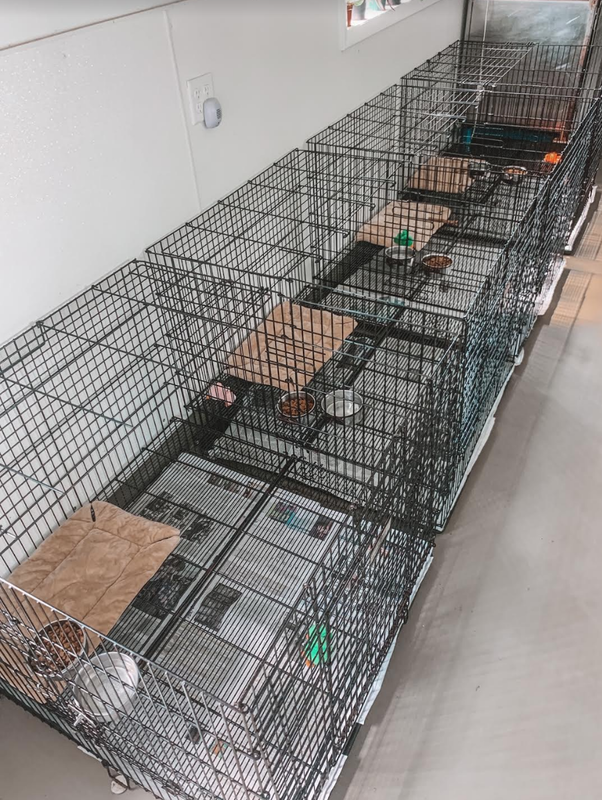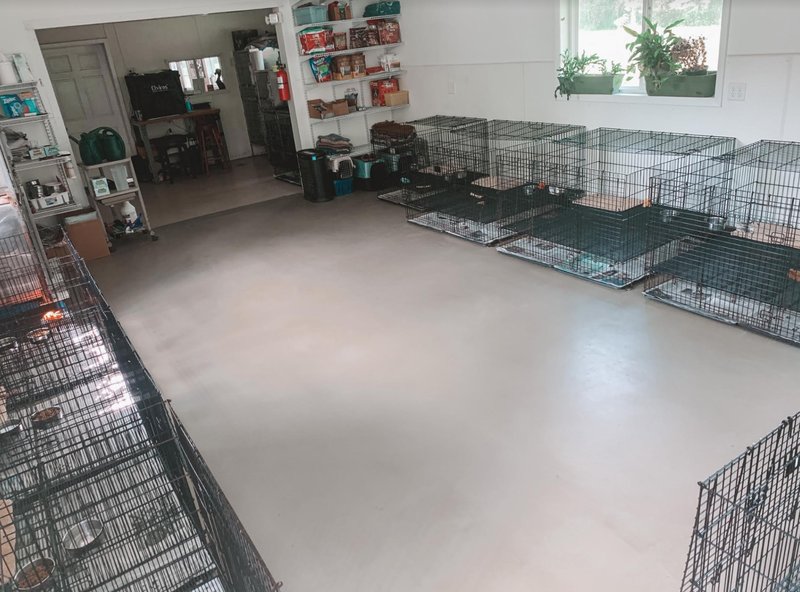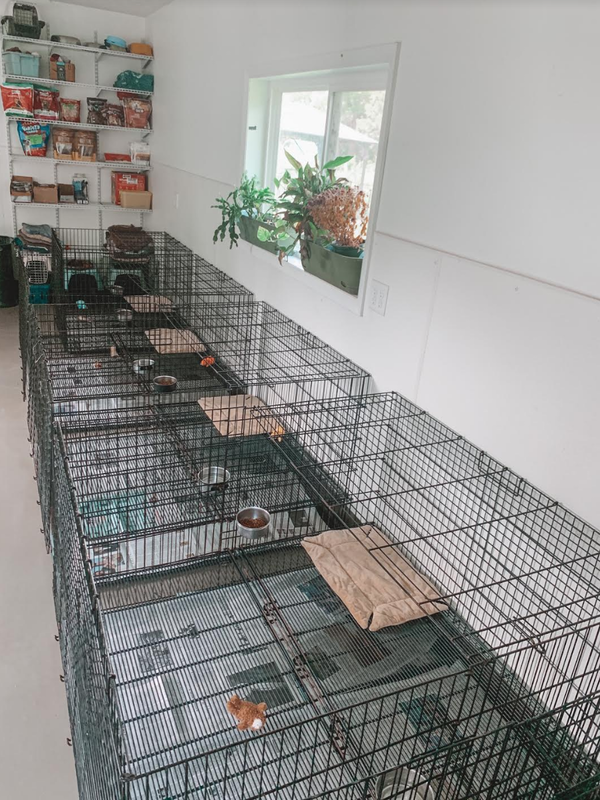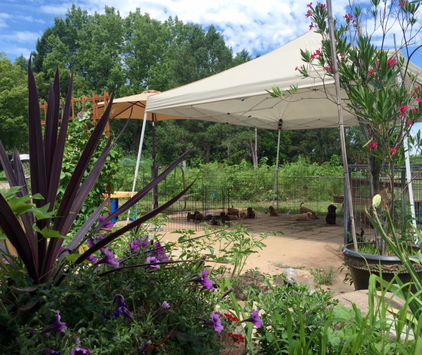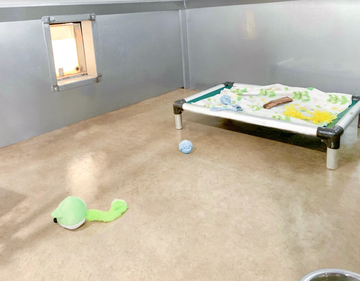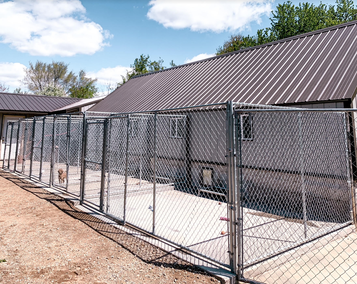Although we're unable to offer tours, we do have pictures for you to view! We understand that it's important to see where the dogs are living, especially since there are so many unregulated "breeders" and puppy mills out there. Below you'll find pictures, information about how puppies develop, and about our breeding dogs!
Originally in the beginning 30+ years ago, we were a very small breeder and raised our dogs in our house. However as we grew in size we decided it was best to have a facility for our dogs and puppies. In our County we're only allowed to have 4 dogs in a household. So, being County, State, and Federally regulated we had to have a facility for regulatory purposes. It's within walking distance from our house too!
Complete View of our Nursery:
Newborn puppies:
When the puppies are born we keep them and mom in one of these 5-sided metal kennels. This kind of kennel provides more warmth for the newborns.
- Until 4 weeks of age puppies cannot regulate their own body heat. We will provide them with a heating pad, bed(s), and a space heater if needed.
- Throughout the day, mom is let out for exercise and to go potty. We also monitor the heat of the kennels to ensure that the mom is comfortable as well.
Puppies a week and a half or older:
Once the puppies are a week and a half or older, we'll move mom and her puppies into a larger 3' x 3' or 4' x 4' ex- pen (depending on litter size and size of mom.) Since the puppies are still unable to maintain body heat until 4 weeks of age, we try to keep the temperature of the whole nursery around 80 degrees all the time. Our visiting area is often colder from visitors coming in and out from outside and so this is also why we allow the first visit with the puppies to be once they're 6 weeks of age.
Puppies 7+ weeks of age:
Weather permitting, we'll put the puppies outside to play and get some fresh air. (We're now working on constructing a sturdier large gazebo!)
Breeding Dams and Sires:
- Our dogs are housed in our heated or cooled facility with access to the outdoors so they get to choose when they'd like to be indoors or playing outside! (We also have dog cots for them outside as well!)
- Each male has his own individual area and is housed with 2 to 3 females in compatible breeding groups.
- Our breedings ARE controlled.
- Our dogs are provided with food 24/7, fresh water, beds, treats, toys, and are fully groomed every 2- 3 months.
- We spend time with them each and every day. This is a 365 days a year job!
- Our breeding females retire at 5- 6 years of age and our males retire at 6- 7 years so that they have over half their life left to live in a pet home. Most small breeds live 13-17 years of age. According to AKC, you can breed and register their litters until they're 12 years old, however, we feel that the second half of their lives should be as a spayed/neutered adult in a pet home.
- We do NOT do stud services and are a closed breeding system. (This means that we have our own separate bloodlines that we're breeding.)
- We chose concrete as we're able to thoroughly sanitize the area's versus grass or dirt. Especially with ran or snow, it keeps the environment cleaner. We also have drainage system inside that is used during our daily cleaning sessions.
